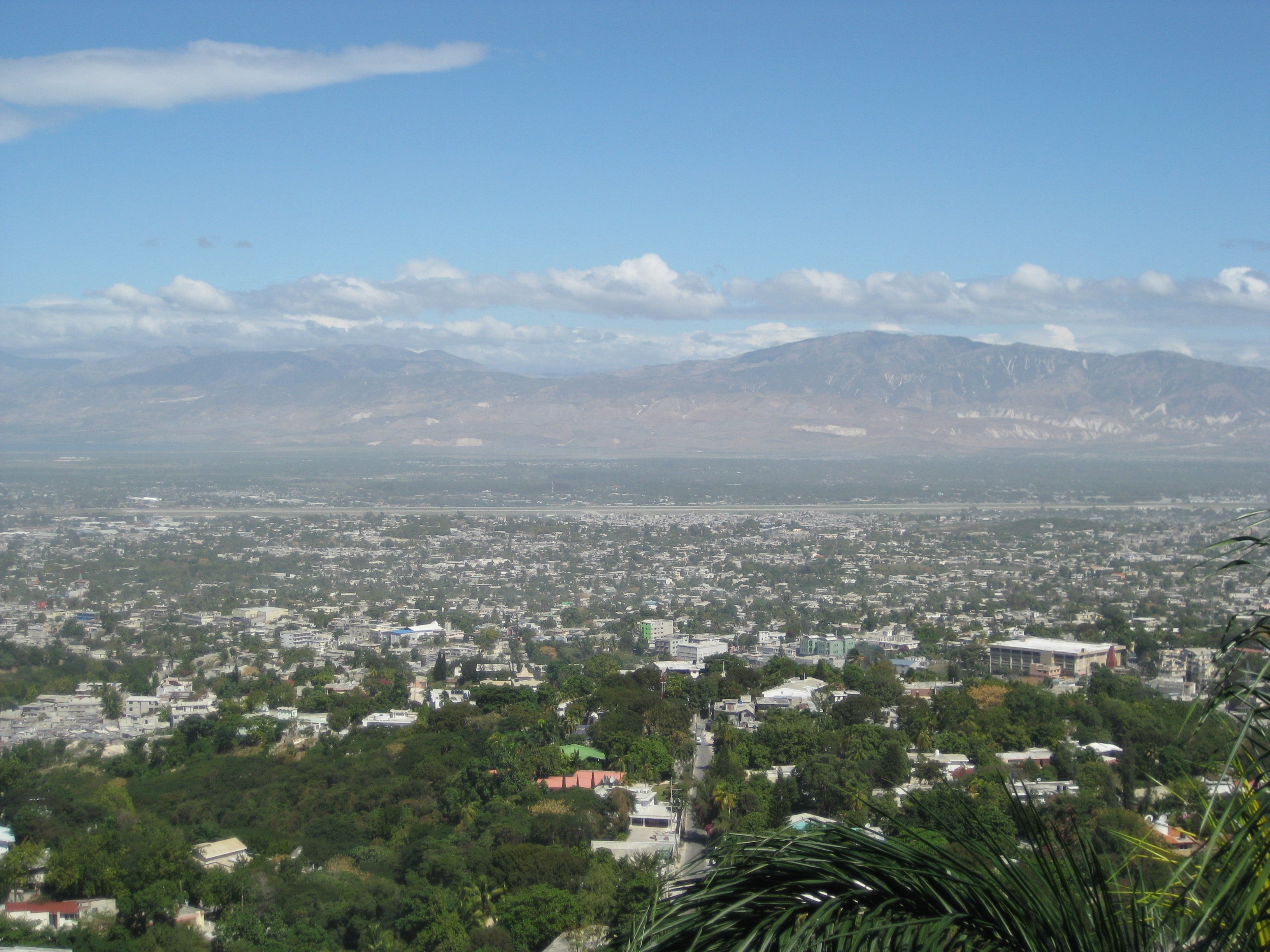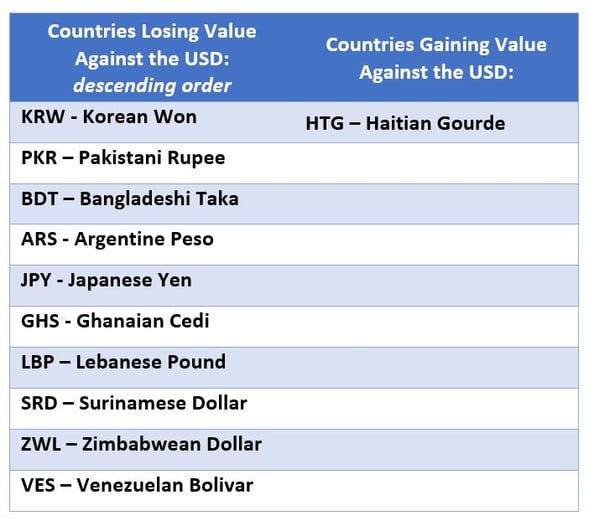Currency Performance: Worst & Best in September 2022
The United States’ interest rate hikes, account deficits, and increased spending have all contributed in some way to this month’s currency changes. The interest rate hikes made by the FED have continued to push the value of other currencies downwards and have also impacted import prices for food and fuel.
Foreign reserves decreased among countries as demand for the U.S. dollar increases among investors. Central banks from various countries implemented currency controls, increased rates, or intervened in the foreign exchange market to counteract the lasting effect of the U.S. dollar.
Currencies Losing Value against the USD (descending order):
- KRW - Korean Won
The Korean won depreciated due to the United States Federal Bank’s decision to increase interest rates. Additionally, the FED gave estimated projections of the United States’ interest rate at the end of the year along with an estimate by the end of 2023 noting significant increases. The won’s performance was also affected by an increase of overseas investments, a slowdown in semi-conductor exports, and a shift to a trade deficit in the balance of goods. - PKR – Pakistani Rupee
A rising import bill caused the rupee to depreciate according to money market analysts. Pakistan also faces a U.S. dollar shortage contributed by the U.S. interest rate hikes. Organizations such as the Saudi Fund for Development and IMF have given money to the country’s economy, but it remains to be seen whether the country will be able to pay off its rising debts and payments. Floods have ravaged one-third of the country where damages may go as high as $40 billion, which will cause further financial complications. Food imports are expected to increase to an all-time high as a result of the devastation caused by the floods. - BDT – Bangladeshi Taka
Surging import costs have negatively impacted the Bangladeshi taka. Finance Minister AHM Mustafa Kamal has said that the currency will gradually move towards a floating exchange rate completely determined by supply and demand. Debts for construction projects such as the Bangabandhu Bridge also contributed to Bangladesh’s trade deficit and U.S. dollar shortage. - ARS - Argentine Peso
Inflation is expected to hit 100% annually by December driving the peso downwards according to the Central Bank’s monthly survey. The Central Bank increased its interest rate to 75% following another increase from the previous month. Creation of a long-term plan for the country's economy was prevented by a lack of political cooperation within the government. - JPY - Japanese Yen
The yen decreased due to an account deficit and an increase of United States interest rates. The Central Bank of Japan announced it will resist increasing rates and the yen will experience downward pressure. Additionally, inflation and lagging wages will affect the buying power of the yen. - GHS - Ghanaian Cedi
Future expectations of inflation including rising food and fuel prices are expected to continue to impact the cedi. The Bank of Ghana increased interest rates last month up 300 basis points to 22% to fight inflation. Ghana’s credit rating decreased by top rating agencies leading to a selloff in investments. The Bank of Ghana approached the IMF for a $3 billion dollar relief program to help improve investor confidence in July, but there are still discussions to be made between both parties before an agreement can be reached. - LBP – Lebanese Pound
The Lebanese pound depreciated after Lebanon’s Central Bank decided to suspend fuel subsidies. Originally, 40% of fuel import costs were covered by the Central Bank, but now gas station owners will have to cover the entire cost. - SRD – Surinamese Dollar
The Surinamese dollar depreciated because of increased demand of the U.S. dollar due to interest rate hikes by the FED and missed inflation expectations. Inflation was expected to decrease this year but remained at an annual 50%. - ZWL – Zimbabwean Dollar
Although the Zim dollar depreciated, the gap between the bank and black market decreased and is showing signs of stabilization. The Central Bank kept its interest rate at 200% and the gold coins that are introduced will provide an alternative currency than the U.S. dollar for the public. Lastly, Zimbabwe banned government ministries and authorities from charging fees in foreign currency to further reduce demand for other currencies. - VES – Venezuelan Bolivar
The bolivar depreciated after the government decided to increase spending towards labor unions. Although inflation increased this past month, the Venezuelan Central Bank reported that the Venezuelan economy expanded by 17% in the first trimester of 2022.
Currencies Gaining Value against the USD:(descending order):
- HTG – Haitian Gourde
The Bank of the Republic of Haiti decided in late-August to inject 8.5 million U.S. dollars into the market to combat the depreciating exchange rate. The exchange rate appreciated soon after and has maintained a steady rate since the intervention was made.
How do currency changes affect compensation?
For up-to-date figures, please reach out to your AIRINC representative or click here to reach our inquiries team now.
Subscribe to our blog to stay updated on changes around the world that impact Global Mobility & compensation.





%20(91)%20(1).png)
%20(69)%20(1).png)
%20(29).png)

